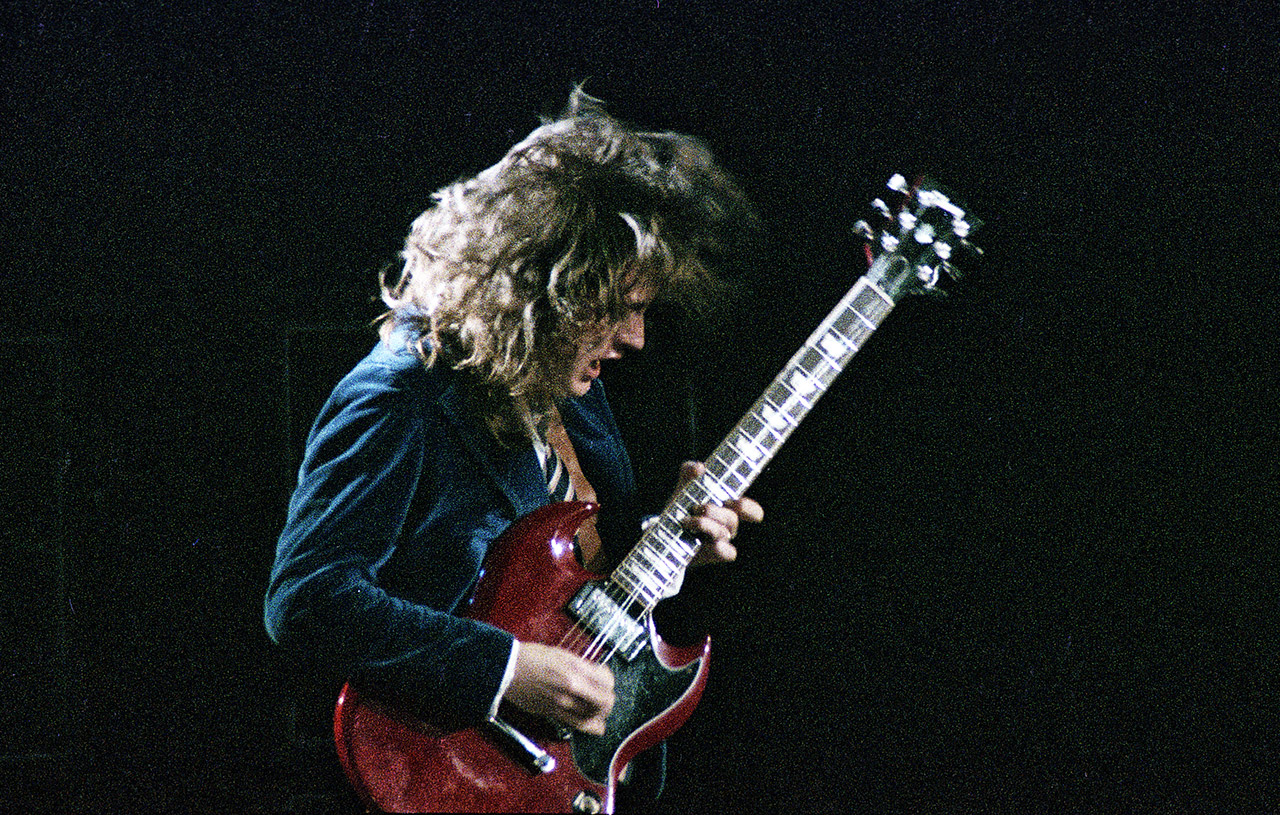Strap on your Gibson SG and learn how to play one of the most iconic guitar solos of all time courtesy of the Gibson App
“Back in Black,” the title track of AC/DC’s 1980 album, is a rock anthem that resonates with fans worldwide. The song, a tribute to the band’s late lead singer, Bon Scott, showcases the gritty, high-voltage style that defined AC/DC’s sound.
In this Gibson App video, Jamie Humphries teaches this song’s classic guitar solo, guiding you through a masterclass on pacing a solo filled with memorable lines that build to a climax. Gibson App subscribers will also find scale workouts for the minor pentatonic scale, which will help them master this solo.
Opening with that unforgettable riff, “Back in Black” immediately grabs your attention—the gusto is there from the count-in. The song features powerful vocals from Brian Johnson, who took over as lead singer after Scott’s tragic death, with his signature vocal-fry embellishments. The driving rhythm and electrifying guitar work make this song an enduring favorite in rock music.
The guitar solo in “Back in Black”
When discussing “Back in Black,” one cannot overlook Angus Young’s brilliant guitar solo as he struts his way into history with a Gibson SG™ Standard. This solo is a perfect blend of technical skill and raw emotion, making it one of the most memorable in rock history. The ubiquitous E minor pentatonic scale shows up heavily in the solo.
Why is the guitar solo in “Back in Black” so iconic?
For starters, it perfectly fits the song’s overall tone and energy. Angus Young’s playing style, characterized by its fast-paced licks and bluesy bends, is on full display. His fusion of speed and melody is a hallmark of his style and is executed flawlessly in “Back in Black.” The dude can craft hooks, even in his guitar solos, and he knows how to let them breathe.
One of the key elements of this particular solo is its structure, which elevates it beyond just a break in the song’s form to a stellar highlight of the entire experience.
How does Angus Young structure his solo in “Back in Black”?
Angus Young begins with a simple attention-grabbing descending sequence that quickly establishes the intensity—lots of vibrato on the last note of each of those two-note figures. He then ups the ante with a quicker series of notes that give the solo a bluesy feel, adding depth and emotion.
Dramatic double stops begin to emerge as this part of the solo develops. The use of vibrato and precise note selection keeps the listener engaged, while the pacing ensures that the solo remains dynamic and exciting from start to finish. It’s one of those guitar solos that tells a story as it progresses, and while there are some quick licks in there, it’s not really a shred affair—much more of an expression of adventurous pacing and well-timed punctuation.
What are the guitar techniques in the “Back in Black” solo?
Let’s dive deeper into specific techniques Angus Young uses in the “Back in Black” solo:
- Bending and Vibrato: Angus employs a lot of string bending and vibrato to give his notes a vocal-like quality. This technique adds expression and makes the solo more memorable.
- Phrasing: The solo is divided into distinct phrases, each with its own character. This approach keeps the listener hooked and makes the solo progress to a pinnacle.
- Dynamics: Angus effectively uses dynamics, starting with quieter, more controlled sections and building up to louder, more aggressive parts. This contrast adds to the solo’s impact.
- Blues Influences: Many of the licks in the solo are rooted in a blues style. The combination of bluesy bends and fast runs creates a perfect balance of emotion and technicality.
Impact and legacy of “Back in Black”
Though AC/DC was unsure of how it would be received given the change in frontman at the time, “Back in Black” has left an indelible mark on rock music. The song’s guitar solo is often cited as one of the greatest of all time, inspiring countless guitarists to pick up their instruments and learn to play. What makes the guitar solo in “Back in Black” stand out among other rock solos? Its combination of technical prowess, emotional depth, and perfect fit within the song makes it a masterpiece of rock guitar playing.
Explore the world of the Gibson App today and start your free trial on iOS and Android devices. Check out more Gibson App videos here.

